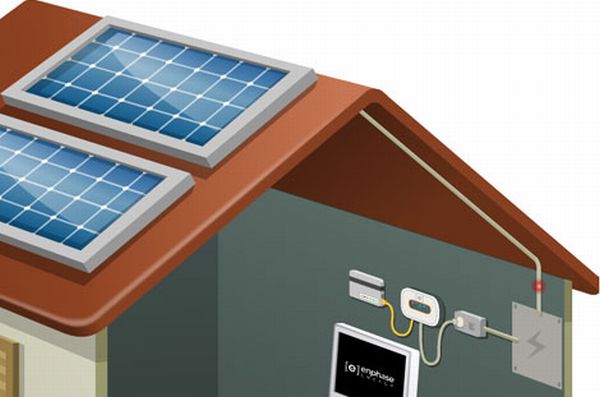
Solar energy is a renewable resource and can be looked upon for most of the future energy needs without the fear of depletion or pollution. However, there has to be several new technologies that can aid in harnessing the energy to the maximum and use it effectively. Given below are the latest technologies that are being currently used and tested for harnessing solar energy for all purposes:
1. Back-contact silicon PV panels
![]()
The Department of Energy in the United States spearheads the research efforts of the country. Recently, it has installed a new 205 kW solar installation with high efficiency solar panels on the roof of the Washington DC headquarters. The huge structure was built by SunPower Corporation based in Silicon Valley. The cells have demonstrated an efficiency of about 23 percent. The design is known as the ‘back contact ‘design where all the electrical contacts are provided on the back side of the cells.
The front part of the cells is fully exposed to the sun. According to the SunPower, the PV cells are at least 50 percent more efficient than the traditional crystalline silicon cells. The company is moving ahead and is getting ready to build another 250 mW solar installation in the California Valley. It is believed to be one of the biggest PV installations in the world.
2. Microinverters

Most of the people who wish to install solar panels on their roofs usually undergo a lot of problems with basic electrical engineering. Though the solar panels produce direct current we have to plug the appliances in the wall with AC power. Some devices are used for converting DC to AC and allow you to feed the solar power into the power home appliances. But a lot of power is lost in the process and causes a lot of discouragement to small scale users.
A solution has been brought about to these kinds of problems with the help of the ‘microinverters.’ They are directly connected to the solar panels and enable each panel to produce AC instead of CD. They can be combined with wireless monitoring system so that you can monitor the performance of each panel. The combination of the monitoring system and the inverters will promote the use of huge amounts of solar power that is grid-connected. SmartSpark is one of the companies that is getting ready to release the microinverters.
3. Concentrating PV panels

Most of the solar power companies are not ready to reveal the mount of cost they spend for their new technologies because it is quite expensive when compared to other projects. A start up known as Sunrgi predicted in April that it would be able to produce electricity at a cheap rate of $0.05 for a kilowatt-hour with the help of its Xtreme Concentrated Photovoltaics. The price is relatively cheap when compared to other conventional sources of electricity.
The technology uses lenses to concentrate the sunlight by a factor of 1600. This is similar to a child using a magnifying glass and sunlight to fry an ant. Sungri may be able to use less number of expensive semiconductors to make the solar cells. More power can be obtained along with saving some money. Many companies are competing to make this concept a reality and commercial success. Emcore is a New Mexico based company that has records broken with highly efficient solar cells. The ‘inverted metamorphic multijunction’ cells are known to be 45 percent efficient by using the mirrors and concentrate lenses. Solaria is another company that minimizes the use of silicon and maximizes the sunlight.
4. CIGS Thin film panels

Silicon is the primary factor that is holding the growth of solar power. Its shortage has caused the prices to soar at least 10 times the original prices. Materials that can replace silicon are also expensive. First Solar is an Arizona based company that is a market leader in the thin-film technology. It produces PV cells with cadmium telluride. The expected capacity is about 1 gigawatt. The technology did not gain much acclaim because cadmium is a hazardous material and creates other complications when disposed.
The next big step toward efficiency is the use of thin-film panels made of CIGS or cadmium indium gallium selenide. The researchers were able to obtain a record of 19.9 percent with this technology and it is considered as a milestone. Many new companies are racing to use this technology to harness the solar power in an effective way.
5. Solar thermal storage

Solar power can be used up until the sun is up. But what will happen if the sun goes down? Since there is only a limited capacity for storage, the scientists are looking forward for better storage options. The construction of a solar power plant with a huge thermal storage capacity is already into completion at Andasol 1 plant in Grenada. It will begin its operation in October and be the first commercial plant to have the storage facility. It can run for about 7.5 hours when the sun disappears. This concept has represented a major shift in thinking about using the solar power when the sun is shining and how the utilities can save power and use it later on for various purposes and occasions.
Along with the plant 1, a second plant will be supplying power to more than half a million people. Both these plants rely on the technology of ‘concentrating solar thermal’ instead of the conventional photovoltaic panels. Huge curved mirrors are used for focusing the sunlight on to a liquid and then heating it for about 750 degrees Fahrenheit and then boiling water for powering a steam turbine. Giant thermoses are needed to store the hot liquid till the steam is produced. This technology will be used in the giant plant in Arizona in 2011.




